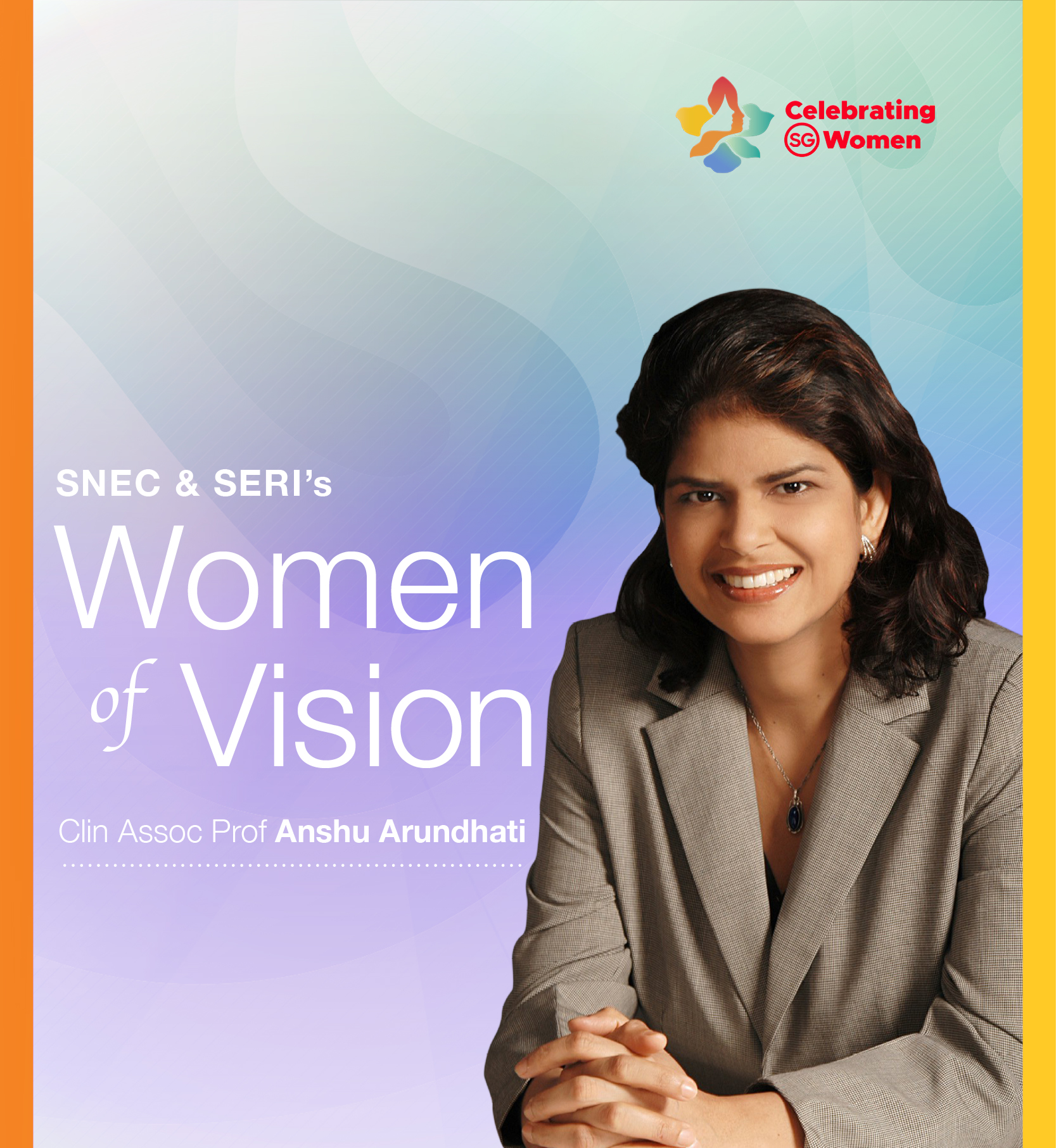Women of Vision
Celebrating SG Women
In the Year of Celebrating SG Women, we present stories which showcase and celebrate women’s multi-faceted contributions and progress at SNEC and SERI.
Join us to honour and acknowledge our team of amazing women who have made impact in the field of Ophthalmology, inspiring those around them with their brand of ethos in life.

Clin Assoc Prof Anshu Arundhati
Head & Senior Consultant, SNEC Eye Clinic @ CGH
Senior Consultant, Corneal & External Eye Disease Department, SNEC
Programme Director, Fellowships, SNEC
Clinical Director, Singapore Eye Bank
Between being a HOD, clinician and educator, which do you prefer and why?
Every role is important to me, and all these roles are interlinked in one way or another. As a clinician I am fully focused on that aspect of the job — to diagnose and treat patients and help them in the best way possible; to connect with them, and to be able to manage challenging cases. It is an undeniable fact that the most satisfying part of my career so far is being a clinician. As an educator, I enjoy the time I spend teaching and mentoring the younger generation. They will be our future clinicians, educators, researchers and administrators, so guiding them is important for a better tomorrow. As HOD, I can go above and beyond just being a clinician who manages patients to become someone who works towards improving patient-care processes. Additionally, I have the ability to ensure that things run smoothly for our clinicians, so that they can work in an environment that supports excellent eye care and offers them the chance to nurture and train their juniors on their learning journey. I believe we can be the harbinger of change; all one needs is the will and determination to do so. Support of the various team members is critical to deliver results, and I have been fortunate to be blessed with supportive juniors, peers and seniors.
Has female intuition played a part in your clinical work?
There was a patient who presented with non-specific complaint of blurring of vision (BOV). He was in general good health and had no other complaints — a refraction check showed that he didn’t even need glasses, but he insisted he couldn’t see well. My sixth sense told me that something was not right, and ordered a Humphrey Visual Field (HVF) test — it turns out that he had a field defect suggestive of a tumour in the brain! We picked it up pretty early; with appropriate referral and treatment, he has remained stable. A more recent example is a patient who underwent cataract surgery and presented with BOV. Upon checking, it was discovered that she had swelling in the cornea, and the BOV was ascribed to this. As she was about to be discharged, I reviewed her case again and something just did not fit, so I ordered further tests, and learnt that the reason for BOV was actually a problem in the retina!
How would you encourage girls to pursue a STEM (science, technology, engineering, math) career?
Set better work hours for work-life balance, for one. During motherhood, better support in terms of maternity leave and providing support for breastfeeding mums. It’s important for woman leaders to mentor and support their female staff and lead by example. Teaching time management to women is also crucial because they play multiple roles: mothers, caregivers, clinicians, and administrators. Having a strong support system both at work and at home, coupled with a positive attitude, is critical in performing well on multiple fronts.
That said, I have personally never felt that my career was hampered at any point by my gender.
What keeps you going, given the multiple roles you have at work and at home?
Yoga, meditation and mindfulness have played important roles in my life, which has seen a fair share of ups and downs. When things go wrong, rather than focusing on the wrong, focusing on what can be done right has helped me through difficult times. I have always believed in doing my best, and live by the dictum “whatever happens, happens for good”.
Click
here to check out the
Women of Vision series.
